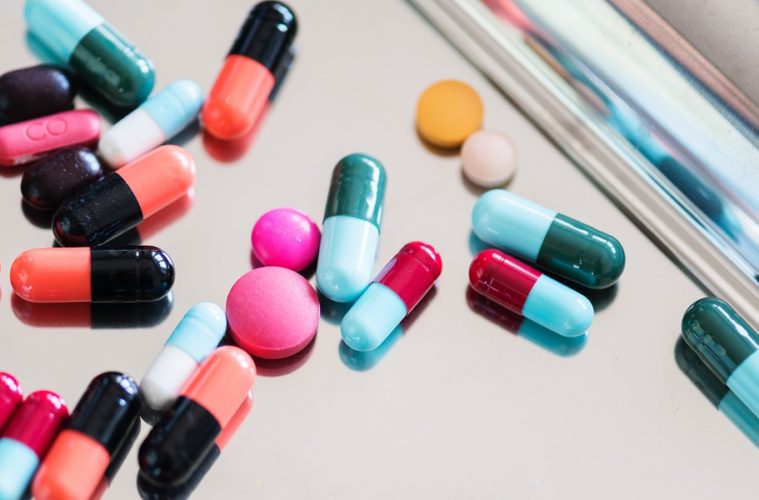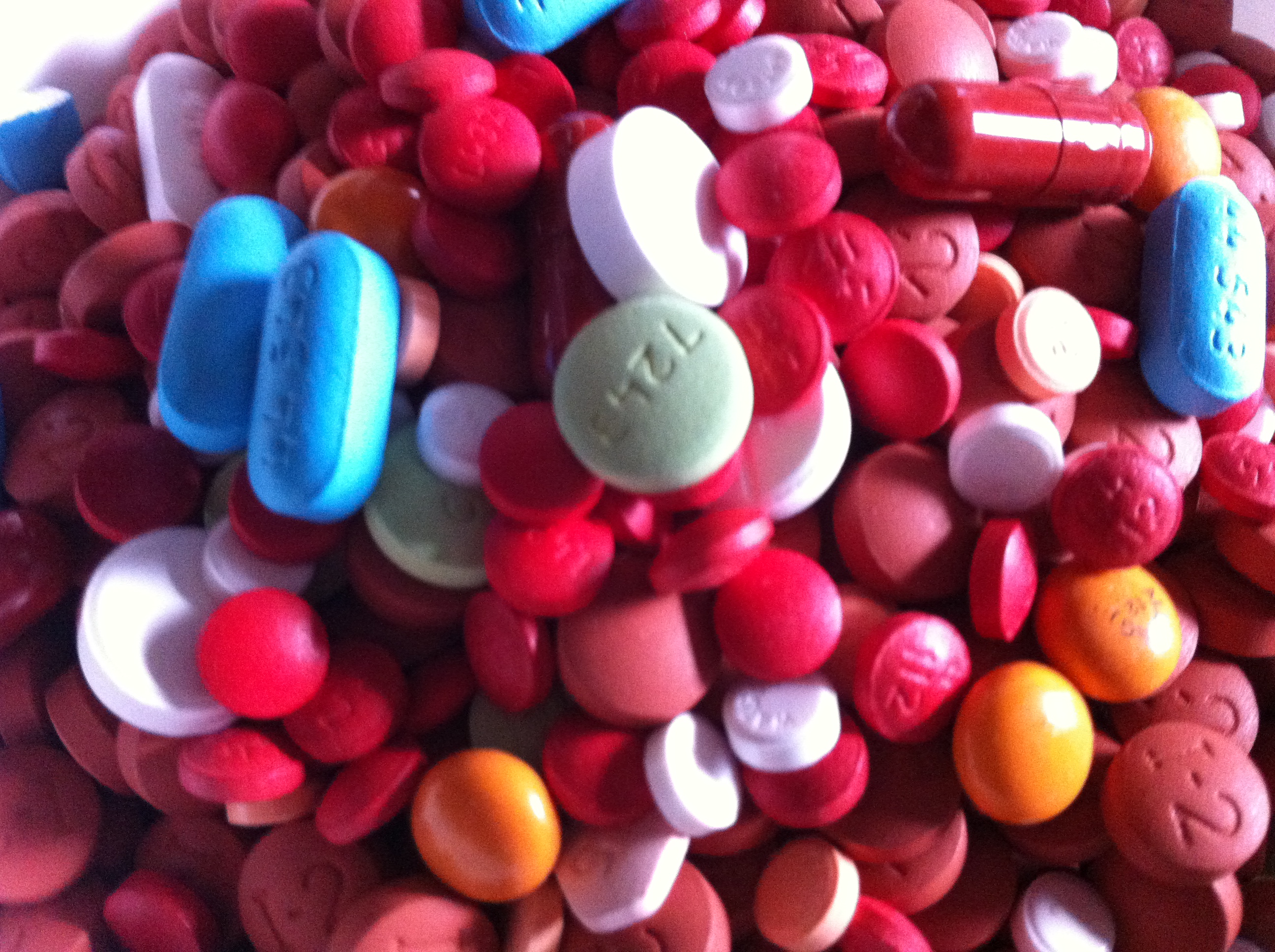Drugs are constantly talked about, whether it be on TV, plastered over social media or a sit-down talk with your parents. But does anyone try and fully educated you about the side effects, how addictive they are or your potential risks other than an overdose? We’ve done our best research to bring you the facts about drugs.
Speed
The effects:
• Speed makes people feel wide awake, excited and chatty.
• Clubbers take it because it gives them the energy to dance for hours without getting tired.
• Amphetamines were once the main ingredient in diet pills because it stops people feeling hungry.
Chances of getting hooked: You can get strongly addicted to amphetamines. The more times you take it, the more you’ll need to get the same buzz.
The law: Speed is a Class B drug. It’s illegal to possess, give away or sell. Prepared-for-injection Speed becomes a Class A and can get you tougher sentencing if you’re caught with it or selling it. Possession can get you up to five years in jail and an unlimited fine. Supplying someone else, including your friends, can get you up to 14 years and an unlimited fine.
Appearance and use: Speed is usually sold in wraps. The powder is off-white or pinkish and can sometimes look like small crystals. The ‘base’ form of speed is purer and is a pinkish-grey colour and feels like putty. ‘Crystal meth’ (methylamphetamine or methamphetamine) is a particularly powerful, addictive and dangerous form of speed that comes in a crystalline form. Prescription amphetamines like dexamphetamine are usually small white pills. They are used to treat conditions like attention deficit hyperactivity disorder (ADHD). Speed is either dabbed onto the gums or is snorted in lines like cocaine using a rolled up bank note. Sometimes it’s rolled up in cigarette paper and swallowed, called a speedbomb. It can also be mixed in drinks. To obtain rapid high blood levels in heavy users it can also be injected or in the case of ‘crystal meth’ smoked in its ‘ice’ form.
Cost: Prices can vary from region to region. The prices given here are an average of street prices reported from 20 different parts of England. £8 – £12 per wrap.
Purity: Speed typically is not a pure drug – most of the powder only contains 5-15% amphetamine. Base speed is usually substantially purer. Speed is often taken along with ecstasy.
The risks:
• Depending on how much has actually been used, it can be difficult to relax or sleep after taking speed.
• The come down can make users feel irritable and depressed and can last for one or two days.
• Speed users have died from overdoses.
• Speed puts a strain on your heart. It’s not advisable for people with high blood pressure or a heart condition.
• Avoid taking speed with anti-depressants or alcohol. This combination has been known to be fatal.
• Taking a lot of speed can give your immune system a battering. You could get more colds, flu and sore throats if you use it a lot.
• Speed can lead to anxiety, depression, irritability and aggression as well as mental illness such as psychosis and paranoid feelings.
• Prepared-for-injection speed may can cause vein damage, ulcers and gangrene (deadening or decaying of body tissue especially the digits and limbs) and especially with dirty needles.
• Shared needles and injecting can help the spread of viral hepatitis and HIV infections. Injecting ‘speed’ may be particularly dangerous because it’s so impure. It’s also easier to overdose when injecting.
Cannabis
The effects:
• Some people may feel chilled out, relaxed and happy, while others have one puff and feel sick.
• Others get the giggles and may become talkative.
• Hunger pangs are common and are known as ‘getting the munchies’.
• Users may become more aware of their senses or get a feeling of slowing of time, which are due to its hallucinogenic effects.
• Stronger ‘joints’ (e.g. typically when skunk or sinsemilla is used) may have more powerful effects. Some users may moderate this effect by actually inhaling and using less strong cannabis; but others may find it becomes tempting to ‘binge smoke’ them.
• The regular use of cannabis is known to be associated with an increase in the risk of later developing psychotic illnesses including schizophrenia. If the recent increase in availability of stronger forms of cannabis does lead to an increase in total use by some people, this might also lead to an increase in their future risk of developing mental health problems. Nobody knows the answer to this question yet…
Chances of getting hooked: As with other drugs, dependence on cannabis is influenced by a number of factors, including how long you’ve been using it, how much you use and whether you are just more prone to become dependent. You may find you have difficulty stopping regular use and you may experience psychological and physical withdrawals when you do stop. The withdrawals can include cravings for cannabis irritability, mood changes; appetite disturbance, weight loss, difficulty sleeping and even sweating, shaking and diarrhoea in some people. If you’ve only been using for a short while there should be no problem stopping but with continued regular use of cannabis, this can become more difficult. You’re also at risk of getting addicted to nicotine if you roll your spliffs with tobacco.
The law: Cannabis is illegal; it’s a Class B drug. If you’re caught with cannabis the police will always take action.
Possession:
• If you’re caught with even a small amount of cannabis the police will confiscate the drug and you can be arrested. What the police will do depends on the circumstances and how old you are.
• Usually, you’ll get a cannabis warning if you’re 18 and over. If you’re under 18, you’ll get a reprimand and your parent or guardian will also be contacted. The police are more likely to arrest you if: you are blatantly smoking in public and/or have been caught with cannabis before.
• If you’re under 18, the second time you get caught you’re likely to get a final warning and be referred to a Youth Offending Team. If you’re 18 and over, the second time you get caught you’re likely to get a Penalty Notice of Disorder, which is an on-the-spot fine of £80. This gets logged on the Police National Computer.
• Regardless of how old you are, if you’re caught with cannabis for a third time it’s likely you will be arrested.
• If you continue to break the law, you can end up with a criminal record which could affect your chances of getting a job. It could also affect whether you can go on holiday to some countries.
• The maximum penalty for possession is five years in prison plus an unlimited fine.
Supply:
• Dealing is a very serious offence.
• In the eyes of the law, this includes giving drugs to friends.
• People who grow cannabis in their homes or carry large amounts on them also risk being charged with intent to supply.
• The maximum penalty for supply is 14 years in prison plus an unlimited fine.
Did you know?
• Drug driving is as illegal as drink driving. You could go to prison, get a heavy fine or be disqualified.
• Allowing people to take cannabis in your house or any other premises is illegal. If the police catch someone smoking cannabis in a club they can prosecute the landlord, club owner or person holding the party.
• Using cannabis to relieve pain is also an offence. Possession is illegal whatever you’re using it for.
Appearance and use: Cannabis comes in different forms. Hash is a black or brown lump made from the resin of the plant. It’s quite often squidgy. In the past, this was the most common form of cannabis in the UK, but this is no longer the case. Much less common is cannabis oil, made by separating the resin from the cannabis plant using various solvents. It is a sticky, dark honey-coloured oil. Herbal cannabis (grass or weed) is made from the dried leaves and flowering parts of the female plant and looks like tightly packed dried herbs. Recently, there has been an increased availability of strong herbal cannabis, containing on average 2-3 times the amount of the active compound, tetrahydrocannabinol or THC, as compared to the traditional imported ‘weed’. This strong cannabis includes: ‘sinsemilla’ (a bud grown in the absence of male plants and has no seeds); ‘home grown skunk’, which has a characteristic strong smell; and imported ‘netherweed’. Strong cannabis is grown through processes that can include selective breeding, use of hydroponics and special heating and lighting techniques. Most people mix cannabis with tobacco and smoke it as a spliff or a joint. Some people put it in a bong or a type of pipe. And others make tea with it or stick it in food like cakes or ‘cannabis cookies’.
Cost: Prices can vary from region to region. The prices given here are an average of street prices reported from 20 different parts of Britain. Grass is usually more expensive currently between £90 to £130 per ounce, with resin (hash) at around £50 per ounce.
Purity: When thinking about the purity of cannabis, we can consider two separate areas: firstly, the strength of the unadulterated product (i.e. how much THC it contains), and secondly how much it is ‘cut’ or contaminated: As a cannabis user, it may not be possible to tell whether a particular sample of ‘skunk’ will have a higher potency than an equal amount of traditional herbal cannabis because the actual potencies of different products overlap substantially. From a health perspective, it is important to understand that the long term impact of smoking these higher potency forms is not yet clear, but might include an increase in the risk of later developing psychotic illnesses including schizophrenia or possibly an increased risk of developing dependence. Nobody yet knows the answer on these points. The potency of herbal cannabis decreases over time in storage and is affected by what parts of the plant have been included in the product. Hence, a user has little guarantee about the ‘intensity of the high’. The intensity of the smell of skunk or its appearance may not act as reliable guide to the actual strength either.
In recent years, herbal cannabis with a gritty texture was found from suppliers who had sprayed glass on the product, possibly to alter its look and weight. The health risks of such additions are not always clear > Cannabis resin sold as hash, especially the ‘soap bar’ variety, is usually cut with other substances to increase the bulk and thus to increase the supplier’s profit. The contaminants may include a variety of substances, with reports of henna, turpentine, boot polish, animal poo, and even tranquillisers. These impurities are then smoked and inhaled along with the cannabis resin.
The risks:
• Even hardcore smokers can become anxious, panicky, suspicious or paranoid.
• Cannabis affects your coordination, which is one of the reasons why drug driving is just as illegal as drink driving.
• Some people think cannabis is harmless just because it’s a plant – but it isn’t harmless. Cannabis, like tobacco, has lots of chemical ‘nasties’, which can cause lung disease and possibly cancer with long-term or heavy use, especially as it is often mixed with tobacco and smoked without a filter. It can also make asthma worse, and cause wheezing in non-asthma sufferers.
• Cannabis itself can affect many different systems in the body, including the heart: It increases the heart rate and can affect blood pressure.
• If you have a history of mental health problems, then taking cannabis is not a good idea: It can cause paranoia in the short term, but in those with a pre-existing psychotic illness, such as schizophrenia, it can contribute to relapse.
• If you use cannabis and have a family background of mental illness, such as schizophrenia, you may be at increased risk of developing a psychotic illness.
• It is reported that frequent use of cannabis can cut a man’s sperm count, reduce sperm motility, and can suppress ovulation in women and so may affect fertility.
• If you’re pregnant, smoking cannabis frequently may have some association with the risk of the baby being born smaller than expected.
• Regular, heavy use makes it difficult to learn and concentrate. Some people begin to feel tired all the time and can’t seem to get motivated.
• Some users may want to buy strong herbal cannabis to get ‘a bigger high’ but unpleasant reactions can be more powerful when you use strong cannabis, and it is possible that using strong cannabis repeatedly could lead in time to more users experiencing harmful effects such as dependence or being more at risk of developing the mental health effects.
Cocaine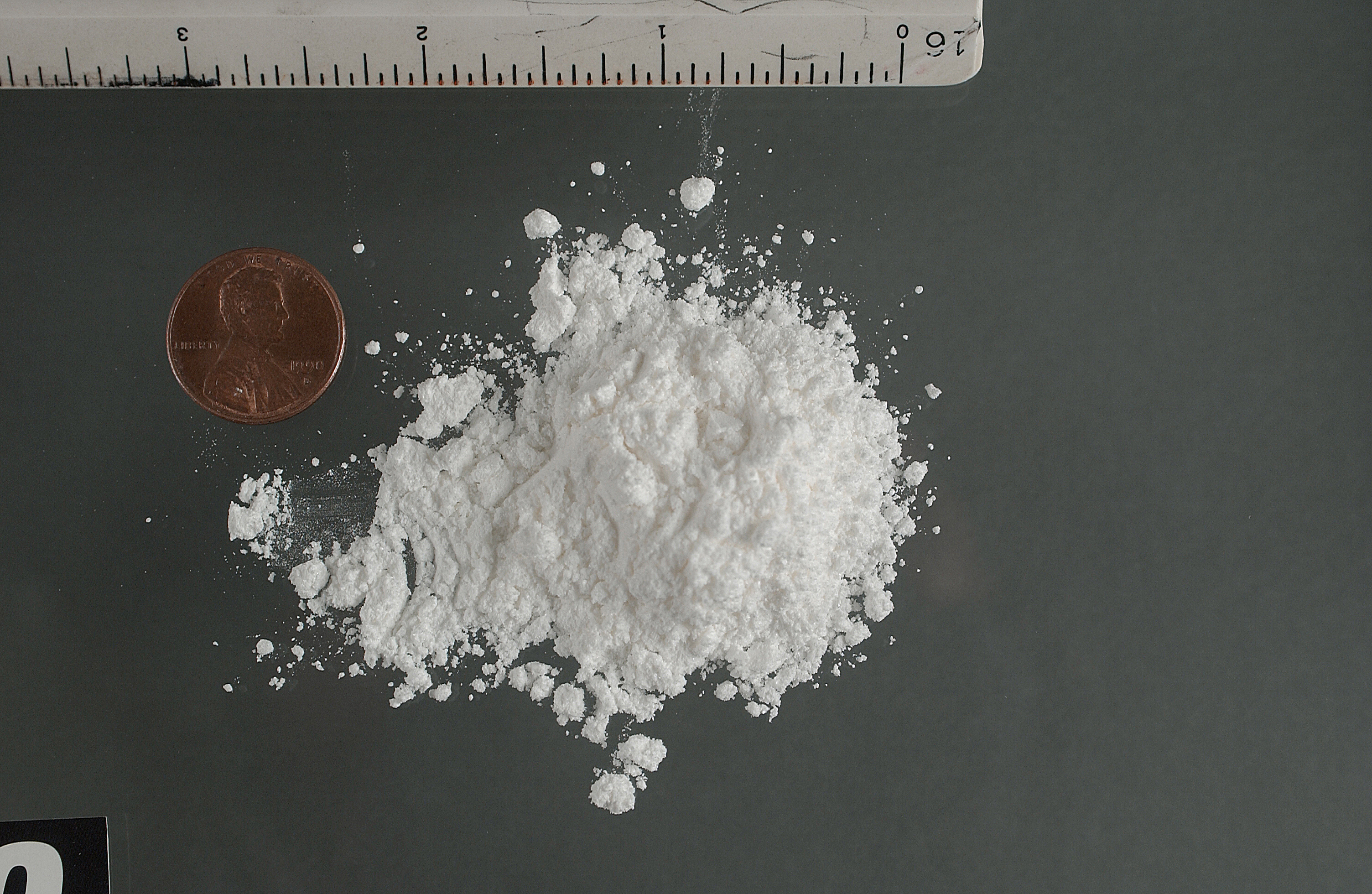
The effects:
• Taking cocaine makes users feel on top of the world. It’s effect is like the stimulant ‘amphetamines’ (speed) but is stronger and doesn’t last as long. People taking it feel wide-awake, confident and on top of their game.
• Cocaine is a stimulant, so it can raise the body’s temperature, make the heart beat faster and stave off feelings of hunger.
• The effects of smoking crack are virtually immediate, peaking for about two minutes and lasting for only about 10 minutes. For snorted coke there is a slower time to peak but the effects still don’t last that long (around 20-30 minutes).
Chances of getting hooked: Coke is very addictive. It can be difficult to resist the craving and strong psychological dependence due to changes in the brain. Recent evidence suggests possible long-term changes to the nervous system. Although psychological dependence is more of a problem than physical withdrawal symptoms – low moods and feeling very rough soon after stopping can tempt people to take more coke.
The law: Cocaine and crack are Class A drugs – illegal to have, give away or sell. Possession can get you up to seven years in jail. Supplying someone else, including your friends, can get you life and an unlimited fine.
Appearance and use: ‘Coke’, or cocaine powder, is a white powder that’s usually divided into lines on a smooth surface and snorted up the nose with a rolled up note or straw. It is not easily smoked. ‘Crack’ is a form of cocaine made into small lumps or rocks (which makes a cracking noise when burnt). A rock of crack is about the size of a raisin. It’s usually smoked in a pipe, glass tube, plastic bottle or in foil. You can easily smoke either ‘crack’ or ‘freebase’ forms of cocaine in this way. Both powder and crack forms of cocaine can be prepared to make a solution for injecting.
Cost: Prices can vary from region to region. The prices given here are an average of street prices reported from 20 different parts of England. A gram of coke powder generally costs between £30 and £60. A crack rock costs between £12 and £20. It’s sometimes sold cheaper by the slice or as a ‘clubbing rock’ for about £10.
Purity: A wrap of cocaine powder can be cut with, for example, sugar or starch. Recent police seizures of cocaine had an average purity of 22%. The purity of crack depends on the purity of the cocaine used originally to produce the crack. However, recent police seizures had an average purity of 31%.
The risks:
• After a big night on cocaine, it’s not unusual for people to feel like they’ve got the flu.
• Some people are over-confident on it and so may take very careless risks.
• The hit from coke doesn’t last long and from ‘crack’ lasts even less. When the effects start to wear off there can be a very strong temptation to take more, particularly with the long ‘come down’, the crash period can happen days later.
• Crack and cocaine powder users have died from overdoses. High doses can raise the body’s temperature, cause convulsions and respiratory or heart failure. Risk of overdosing increases if crack is mixed with heroin, barbiturates (sedatives) or alcohol.
• Cocaine is highly risky for anybody with high blood pressure or a heart condition. Perfectly healthy, young people can have a fit or heart attack after taking too much coke and you may not know you’ve got a pre-existing heart condition.
• Those who get into cocaine very often find they begin to crave it more. And because the effects wear off so quickly, cocaine and crack can become an expensive habit to keep.
• Using cocaine a lot makes people feel depressed and run down.
• People who use crack or coke regularly often develop serious problems with anxiety and paranoia. It’s a known cause of panic attacks.
• Large or frequent use of coke tends to knock sexual desire on the head.
• Cocaine can bring previous mental health problems to the surface. If a close relative of yours has had serious mental health problems, it’s possible there might be an increased risk for you in taking cocaine.
• Injecting any drug can cause vein damage, ulcers and gangrene, particularly with dirty equipment. Sharing of needles and other injecting can help the spread of HIV and hepatitis virus infections.
• It’s easier to overdose if you’re injecting your cocaine. Cocaine is a local anaesthetic and it deadens pain at the injection site. This makes it harder for users to notice the damage they may be doing.
• Using cocaine with other drugs or alcohol (whether with depressant or stimulant substances) can substantially increase the risk of side-effects.
• Alcohol and cocaine together can be particularly dangerous as the substances interact in the body to produce a toxic chemical. The risks further increase if other drugs are taken as well.
• Injecting a mixture of cocaine and heroin, known as a ‘speedballing’ is a dangerous cocktail – with potentially fatal results.
• Taking cocaine when you’re pregnant can damage your baby. It may cause miscarriage, premature labour and low birth weight babies. Babies born to mothers who keep using throughout their pregnancy may experience a withdrawal syndrome after delivery.
• Heavy crack users may take heroin to try to dull their cravings. As a consequence, some crack users have become dependent on heroin as well.
• Regularly smoking crack can cause breathing problems and pains in the chest. Smoking anything damages the lungs.
Ecstasy
Slang: Street names for drugs can vary around the country. E, pills, brownies, Mitsubishi’s, Rolex’s, Dolphins, XTC.
The effects:
• An E gives people an energy buzz that makes them feel alert and alive.
• Ecstasy makes people feel in tune with their surroundings – sounds and colours are more intense.
• Users often feel great love for the people they’re with and the strangers around them. On its own, it’s not a drug that makes people violent.
• Lots of people feel chatty on E. (These chats don’t always make sense to people who aren’t on an E).
Chances of getting hooked: It’s possible to build up tolerance to E, which means people take more to get the same buzz. You may also develop a psychological dependence (the desire to keep on using even in spite of potential harm). There’s some uncertainty about the long term side effects of Es. But evidence suggests it can cause damage to the brain causing long term problems – like depression, personality change and memory loss.
The law: Ecstasy is a Class A drug – illegal to have, give away or sell. Possession can get you up to seven years in jail. Supplying someone else, including your friends, can get you life and an unlimited fine.
Appearance and use: Pure Ecstasy is a white crystalline powder known to chemists as MDMA. Ecstasy sold on the street is usually in tablet form although it’s getting more common to see it sold as powder. Es come in all sorts of colours and some of them have pictures or logos stamped into them. They’re usually swallowed although some people do smoke or snort them. People have been known to take another E when they haven’t initially felt the expected ‘high’. The danger then is that both Es kick in and you’ve a double dose to deal with.
Cost: Prices can vary from region to region. The prices given here are an average of street prices reported from 20 different parts of England. Between £3 and £8 depending on the type of pill you buy and where you live.
Purity: A big problem with Es is that they’re rarely pure. They can be cut with amphetamines (like speed), caffeine and other substances because it’s cheaper to produce. Some of the new man-made drugs like PMA and 4-MTA can be passed off as E’s. Their effects can be very different or they may take longer to kick-in with a risk of the user double-dosing to compensate (risking double the side effects).
The risks:
• Physical side effects can develop that include: dilated pupils, a tingling feeling, tightening of the jaw muscles, raised body temperature and the heart beats faster.
• Short-term effects of use can include anxiety, panic attacks, confused episodes and paranoid or psychotic states.
• There’s no way of telling what’s in an E until you’ve swallowed it. So, there may be negative side effects from other ingredients in the tablet.
• E’s can make users feel very down after use.
• There’ve been over 200 ecstasy-related deaths in the UK since 1996. Ecstasy use is the cause of death in many of the cases but there have been some involving other substances sold as Ecstasy e.g. PMA.
• Ecstasy affects the body’s temperature control. Dancing for long periods in a hot atmosphere increases the chances of overheating and dehydration. Take regular breaks from the dance floor to cool down.
• And watch out for your mates – sometimes they might not realise they’re in danger of overheating or getting dehydrated.
• Be careful with fluids though, as drinking too much can also be dangerous or even fatal. Ecstasy can cause the body to release a hormone which prevents the production of urine. Drink too quickly and it interferes with your body’s salt balance, which can be as deadly as not drinking enough water. Reduce the risks by sipping no more than a pint of water or non-alcoholic fluid every hour.
• Using Ecstasy has been linked to liver, kidney and heart problems. Anyone using too much can become paranoid and depressed.
• Some long-term users report getting colds, flu and sore throats more often. This may be attributed to staying awake for 24 hours, which puts your immune system under pressure.
• There’s research to suggest that the exhaustion and dehydration associated with Ecstasy can activate urine infections like cystitis in women.
• Anyone with a heart condition, blood pressure problems, epilepsy or asthma can have a very dangerous reaction to the drug.
GHB & GBL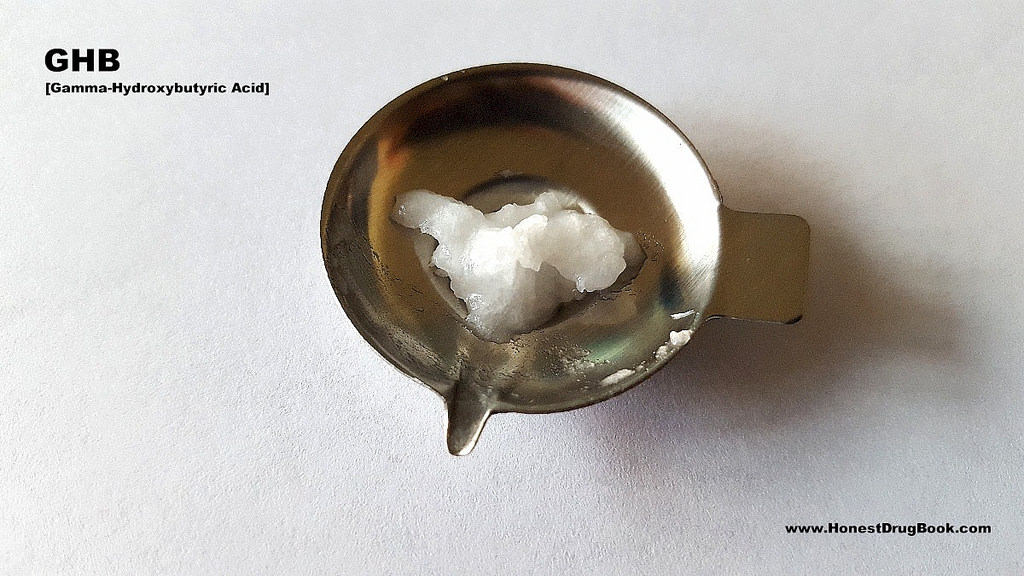
Slang: Street names for drugs can vary around the country. GHB, GBH, Liquid Ecstasy, GBL.
The effects:
• GHB and GBL produce essentially the same effects. They both produce a feeling of euphoria and can reduce your inhibitions and make you feel sleepy.
Chances of getting hooked: Repeated use of GHB is known to cause dependence in some people and this is likely to be true for GBL as well.
The law: GHB is a Class C drug – illegal to have, give away or sell. Possession can get you up to two years in jail and/or an unlimited fine. Supplying someone else, even your friends, can get you up to 14 years in jail and/or an unlimited fine. GBL is not a Class C drug. It is a legal product used in industry and probably available from other sources such as the internet. However, The Advisory Council on the Misuse of Drugs (ACMD) which advises the government has provisionally recommended that GBL should also be controlled as a Class C drug with consultation on a licensing arrangement for it’s use in industry. GHB and GBL are linked to drug assisted sexual assault. The Sexual Offences Act 2003 states that it is an offence to administer a substance to a person with intent to overpower that person to enable sexual activity with them. This is punishable by up to 10 years imprisonment.
Appearance and use: GHB is usually sold as an odourless liquid in small bottles or capsules (it does come in powder form but is rarer). It tastes slightly salty. A teaspoon or a capful is a normal dose although the strength of GHB varies so it can be very difficult for people to know how much they’re taking. The effects start between 10 minutes to one hour and can last up to seven hours or so. GBL is a colourless, oily liquid with a weak odour. It is a common solvent used in products like paint strippers and stain removers.
Cost: Prices can vary from region to region. Based on an average of street prices reported from 20 different parts of England, a 30ml plastic container of GHB costs about £15.
Purity: The strength of GHB liquid varies widely from bottle to bottle. And when mixed badly, it can really burn the mouth. At present there is little reliable evidence to determine the purity of GBL.
The risks:
• Using both GHB and GBL can cause unconsciousness, coma and death.
• Even experienced users are at risk from death by intoxication.
• There is some evidence that taking these drugs with alcohol or other sedative drugs adds to the risk of harm.
• GHB and GBL can cause death when taken on their own.
• Because GHB and GBL can really knock you out it’s been linked to drug assisted sexual assault (See ‘the law’ paragraph above).
Ketamine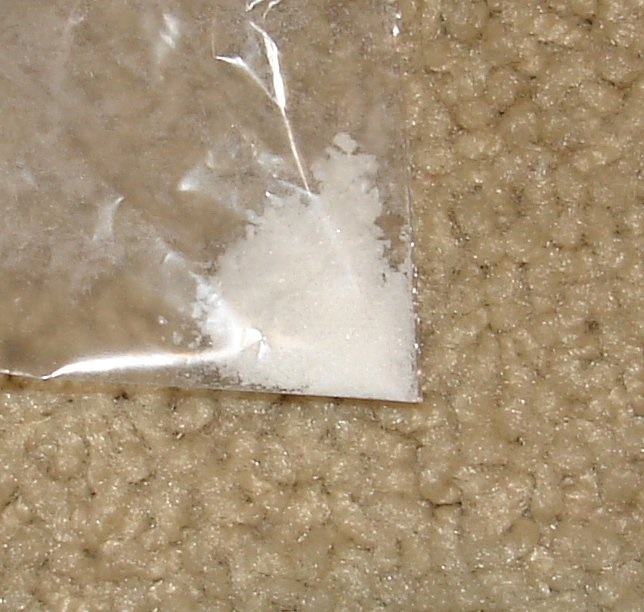
Slang: Street names for drugs can vary around the country. Green, K, special K, super K, vitamin k
The effects:
• Ketamine can cause perceptual changes or hallucinations like LSD, in addition to its effects on reducing bodily sensation. Users can trip for up to an hour and may feel after-effects for some hours.
• It can give the user a floating feeling as if the mind and body have been separated.
Chances of getting hooked:
You can become psychologically but not physically dependent on ketamine (which means you can develop the desire to keep taking it in spite of potential harm but without any withdrawal effects on stopping use). You may need to take increasing amounts of ketamine to achieve the same effect (tolerance).
The law: Ketamine is a Class C drug which means that it’s illegal to possess it and to supply it. Possession can get you up to two years in prison and/or an unlimited fine. Supplying someone else, even your friends, can get you 14 years in jail and/or an unlimited fine.
Appearance and use: Legally produced ketamine comes in liquid form which is usually injected. The illegally produced version usually comes as a grainy white powder which is usually snorted but it may also be obtained as a tablet.
Purity: Legally produced ketamine will be pure. But illegally produced tablets are commonly found with ephedrine added (which is commonly used for treatment of allergies and asthma). Sometimes these are passed off as ecstasy.
The risks:
• Users may be physically incapable of moving while under the influence of these drugs.
• Ketamine can cause panic attacks, depression, and taken in large doses, can make existing mental health problems worse.
• Because you don’t feel any pain when you’re on ketamine, you can injure yourself badly and not know you’ve done it.
• High doses, especially with other depressant drugs like alcohol, can dangerously suppress breathing and heart function and can lead to unconsciousness.
• Ketamine is very dangerous when mixed with ecstasy or amphetamines. It can result in high blood pressure.
• If high enough doses are taken, the anesthetic effect can result in death, for example due to unconsciousness and inhalation of vomit.
• There have been recent reports in the medical literature of serious bladder and related problems found in ketamine users.
LSD
Slang: Street names for drugs can vary around the country. Acid, blotter, cheer, dots, drop, flash, hawk, L, lightening flash, liquid acid, Lucy, micro dot, paper mushrooms, rainbows, smilies, stars, tab, trips, tripper, window. Sometimes LSD is known by the pictures on them e.g. strawberries.
The effects:
• A ‘trip’ can appear to involve a speeding up and slowing down of time and movement.
• Colour, sound and objects can get distorted and you can experience double vision.
• Trips can heighten the mood you’re already in.
Chances of getting hooked: There is no evidence LSD is addictive.
The law: LSD; Class A drugs – illegal to have, give away or sell. Possession can get you up to seven years in jail. Supplying someone else, including your friends, with LSD can get you a life sentence and an unlimited fine. You can also be refused a visa in some countries if you hold a drug conviction.
Appearance and use: As street drugs, they’re usually sold as tiny squares of paper with pictures on them. But it can be found as a liquid or as tiny pellets.
Cost: Prices can vary from region to region. The prices given here are an average of street prices reported from 20 different parts of England. £1 – £5 a tab
Purity: It’s rare to get acid that’s impure. Some people think it hasn’t worked, so they take more and find it’s too much to handle. Acid can take up to two hours to take effect.
The risks:
• LSD or ‘acid’ has very random, and sometimes very frightening, effects. Trips feed off a person’s imagination.
• If panic sets in, the experience can be scary and confusing. Bad trips can be terrifying.
• Flashbacks sometimes happen. This is when part of the trip is subsequently re-lived after the original experience. (This usually occurs within weeks or months after taking the LSD but can be longer).
• There’s no evidence to suggest LSD does any long-term damage to the body or long-term psychological damage.
• Avoid taking acid if you’re in a bad mood. People have been known to harm themselves during a bad trip.
• LSD could have serious, longer term implications for somebody who had a history of mental problems and may also be responsible for triggering a mental health problem that had previously gone undetected.
Amanita Muscaria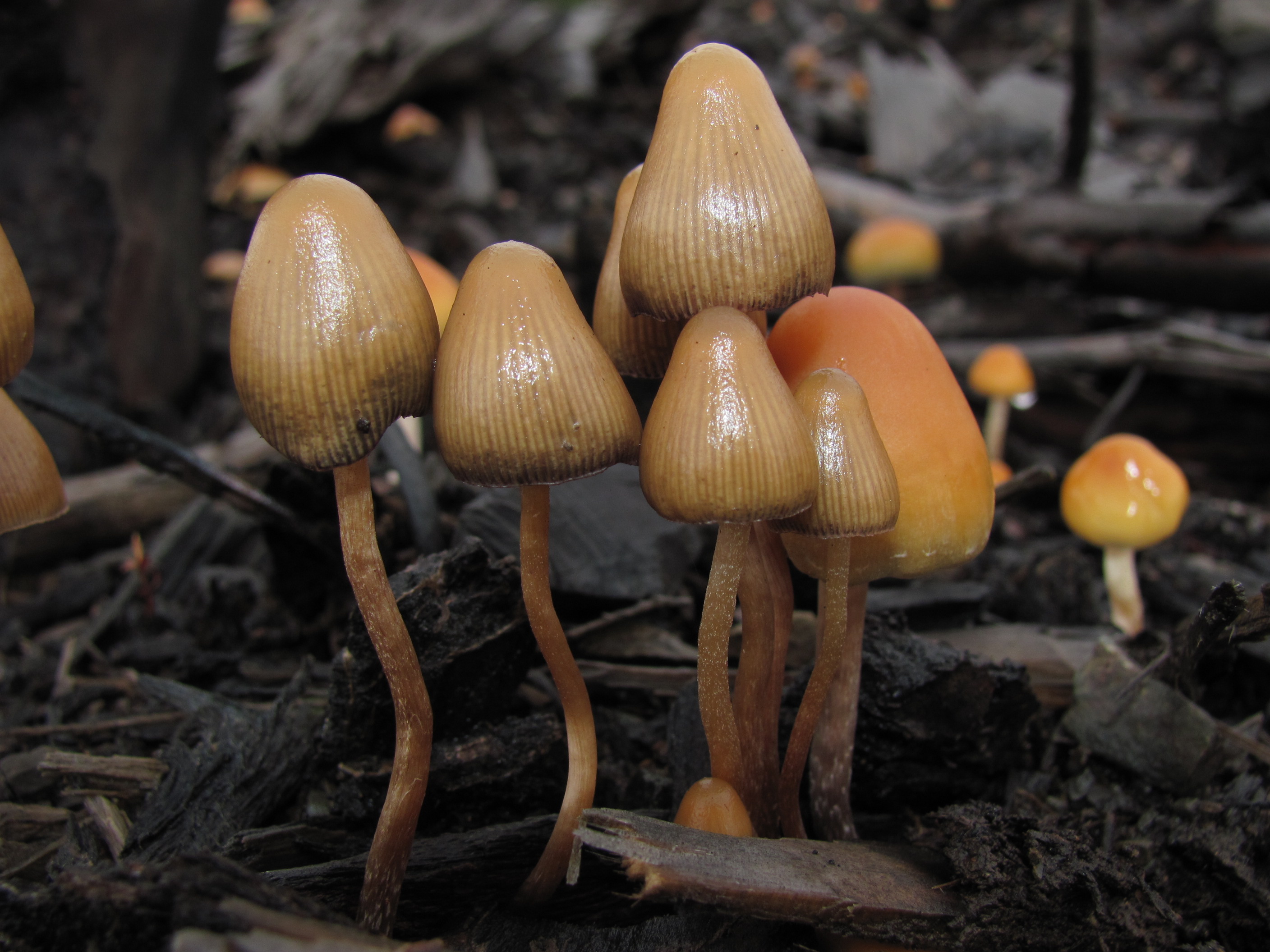
Slang: Street names for drugs can vary around the country. Magic mushrooms, Liberties, magics, mushies, liberty cap, shrooms, Amani, agaric.
The effects:
• The effects for both mushrooms can take between 30 minutes to two hours to happen. The strongest part of the trip takes 4-10 hours and the after-effects usually last a further 2-6 hours. The more you take, the longer your trip could last.
• Both mushrooms can make you feel confident, relaxed and in good spirits.
• They can distort colour, sound and objects. One effect can be that your senses get mixed up so that, for example, you think you can hear colours and you can see sounds.
• They can also speed up and slow down your sense of time and movement. You may feel like you’re dreaming when you’re awake.
• You can feel more emotionally sensitive. Some people become creative and feel enlightened.
Chances of getting hooked: Magic mushrooms are not addictive although, like with LSD, you can become tolerant of the effects quite quickly.
The law: The new Drugs Act 2005 has changed the law so that now both fresh and prepared (e.g. dried or stewed) magic mushrooms that contain psilocin or psilocybin are classified as Class A drugs. Possession can get you up to seven years in jail and/or an unlimited fine. Supplying someone else, including your friends, with magic mushrooms can get you life imprisonment and/or an unlimited fine.
Appearance and use: Psilocybe Semilanceata, or liberty caps, are small and tan-coloured and they bruise blue when they’re touched. Amanita Muscaria, or fly agaric, mushrooms are more like the red and white spotted toadstools you see in fairytale books. After picking, they’re often eaten raw or are dried out and stored. Most people take between 1-5 grams. The fly agaric mushrooms tend not to be consumed raw as they can cause severe nausea.
Cost: Free if you know where to find them or up to £5 for a handful. Prices also vary from region to region.
Purity: The biggest danger with taking any magic mushrooms is making sure you’ve picked the right thing. There are hundreds of varieties and some of them are highly poisonous. As you’d expect with something that grows naturally, the strength varies depending on the freshness, the season and there are regional variations.
The risks:
• Both types of mushrooms can make you feel sick, tired and disoriented but fly agaric (Amanita Muscaria) is much more potent and risky to take.
• ‘Bad trips’ are seriously frightening and unsettling. And you can’t tell whether you’re going to have a bad trip or a good trip. Also you can get flashbacks some time afterwards.
• You may be at risk when you’re not in complete control of what you’re doing. Your perception of your body and the world around you can be distorted.
• Eating the wrong kind of mushroom can make you seriously ill, and even kill you.
• Magic mushrooms can complicate any mental health issues you may have.
FOR MORE INFORMATION PLEASE VISIT: Talk to FRANK


